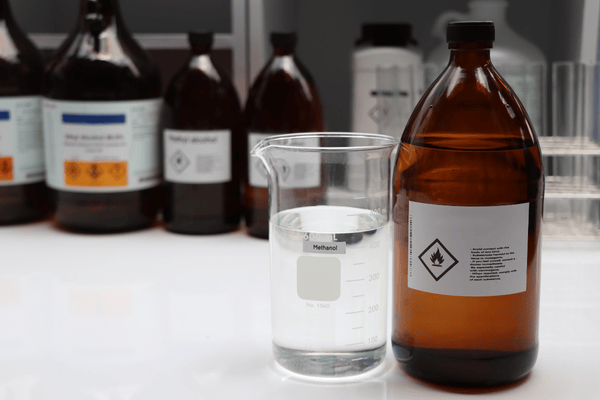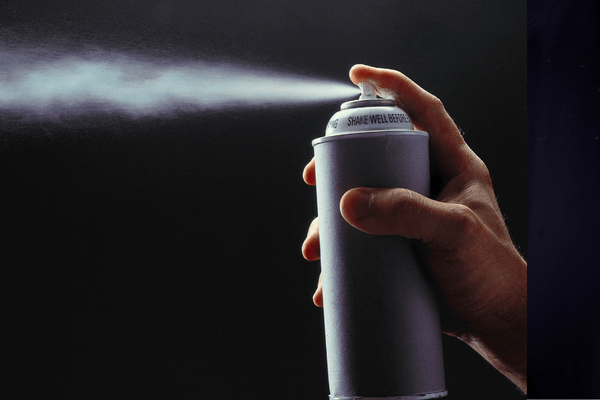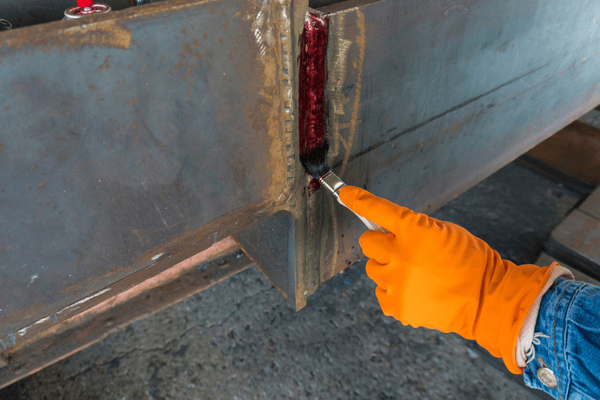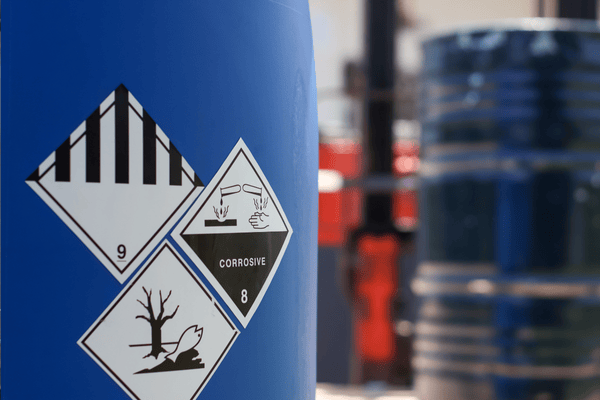Dell Tech classifies products for chemical hazards under Canadian and U.S. regulations. Our ISO 17025 accredited laboratory provides testing and expert assessment to determine physical, health, and environmental hazards, ensuring your products meet WHMIS, GHS, and transportation classification requirements.
FFlammable products pose significant risks in storage, transport, and use. Dell Tech offers a full range of flammability testing for liquids, solids and aerosols in accordance with Canadian, U.S., and international regulatory standards. Whether you are classifying a cleaning product, a consumer aerosol, or a candle, we can help determine the correct flammability category and ensure your safety labeling is compliant.

We evaluate the flammability of liquids and solids using recognized international methods, including:
Flash Point Testing – ASTM D56 (Tag Closed Cup) and ASTM D93 (Pensky‑Martens Closed Cup) for liquids of varying viscosities.
Candle Safety – ASTM F2417 to assess flame height, stability, and self‑extinguishing properties.
Sustained Combustibility – UN TDG Test L.2 to determine if liquids with certain flash points sustain burning.
Flammable Solids – UN Manual of Tests and Criteria, Part III, Section 33.2.4 – Test N.1 and CPSC 16 CFR 1500.44 to classify solids for transport and consumer safety regulations.
Aerosol products require specialized testing to assess flame projection, ignition potential, and foam flammability. We perform:
Flame Projection and Flashback Testing – CCCR Schedule 1, CPSC 16 CFR 1500.45, and Health Canada Official Method DO‑30.
UN TDG Ignition Distance Testing – Measures product ignition distance under controlled conditions.
UN TDG Enclosed Space Ignition Testing – Simulates ignition risk in confined spaces.
UN TDG Foam Flammability Testing – Evaluates flame height and burn duration for aerosol foams.
Our experts interpret results to determine the correct classification under UN TDG, WHMIS, OSHA HazCom, CCCR, 2001, and CPSC requirements, and can support you with SDS authoring, workplace labels, and compliant consumer packaging.


Products that are corrosive to metals can damage containers, compromise transport safety, and pose environmental risks. Our laboratory performs Corrosion to Metals testing in accordance with the United Nations Recommendations on the Transport of Dangerous Goods (UN TDG), Part III, Section 37.4 — the internationally recognized method for determining whether a substance meets the criteria for classification as Corrosive to Metals – Category 1 under the GHS and Packing Group III for transport.
Following the UN TDG procedure, we expose standardized mild steel and aluminum specimens to your product under controlled conditions (55 °C for 168 hours) to measure corrosion rates. This data supports compliance with Transport Canada TDG Regulations and U.S. DOT requirements, helping you assign the correct hazard classification and precautionary labeling.
If needed, our Product Safety Group can also assist with preparing workplace labels, SDS updates, and other safety documentation to ensure your product is fully compliant from lab to market.
Skin‑corrosive products can cause irreversible tissue damage and require strict hazard classification and labeling. Our laboratory conducts in vitro skin corrosivity testing using the OECD Test Guideline 435 – Corrositex® Membrane Barrier Method, an internationally recognized, non‑animal alternative to traditional dermal corrosion tests.
The Corrositex® method uses a proprietary bio‑barrier membrane and chemical detection system to mimic the effect of corrosive substances on living skin. By measuring the time it takes for a test substance to penetrate or destroy the membrane, we can determine its GHS Skin Corrosion Category (1A, 1B, or 1C) and assign the appropriate UN Packing Group for transport classification.
This approach supports compliance with Canadian WHMIS, CCCR 2001, U.S. OSHA HazCom, CPSC (FHSA) and UN TDG/DOT transport regulations, ensuring your product is correctly classified and labeled. If required, our Product Safety Group can also assist with SDS updates, workplace labels, and other safety documentation to help you meet regulatory requirements efficiently.


We provide non‑animal skin irritation testing using the Irritection® Assay System – Dermal Assay. This in vitro method simulates human skin to quickly and reliably determine if a product requires GHS skin irritation classification, helping you meet WHMIS, OSHA HazCom, and international transport requirements.
We offer in vitro eye irritation testing using the OECD 496 – Macromolecular Test Method, a non‑animal approach that simulates how the human eye reacts to chemicals. This method measures changes in a protein‑based matrix to determine if a product should be classified for serious eye damage or eye irritation under GHS regulations. It’s a fast, ethical way to meet WHMIS, OSHA HazCom, CCCR, CPSC, and UN transport requirements.
We perform acid and alkali reserve testing in accordance with CCCR, 2001 to quantify a product’s neutralizing capacity and determine its corrosive classification. Using titration to pH 4.0 (acid reserve) or pH 10.0 (alkali reserve), we provide defensible data for accurate hazard classification and compliant labeling of consumer chemical products.
We perform pH testing in accordance with CCCR, 2001 to determine if a product meets the regulatory thresholds for classification as acidic or alkaline. Using calibrated pH meters, we provide accurate data to support compliant hazard classification and labeling for consumer chemical products.
We measure product viscosity using ASTM D2196 to determine if it meets aspiration hazard criteria under GHS/WHMIS, CPSC, and CCCR, 2001. This testing supports accurate hazard classification and compliant labeling for consumer and workplace products.
We assess the aspiration risk of aerosols using ASTM D7952, which evaluates spray patterns and aerosol deposition rates to determine aspiration potential. This testing helps identify aerosol products that may pose an aspiration hazard, ensuring that appropriate labeling and/or child-resistant packaging requirements are met.
To ensure packaging integrity and consumer safety, our laboratory performs Leak Testing in accordance with the Canadian Consumer Chemicals and Containers Regulations, 2001 (CCCR, 2001) for unpressurized liquid containers. This method evaluates whether a container’s closure system can prevent leakage during normal handling, storage, and transport.
A passing result confirms the container meets regulatory requirements for preventing product loss and accidental exposure. We do not conduct leak testing for aerosols, focusing exclusively on unpressurized packaging used for consumer chemical products.

Incorrect or missing classification can lead to enforcement actions, product seizures, or safety incidents. Regulatory bodies in Canada and the U.S. require documented proof that your product has been assessed for hazards and that all packaging and documentation reflect the results accurately.
Dell Tech helps reduce your liability and improve your compliance by performing accredited hazard classification testing and providing clear documentation for your regulatory files.

Our lab meets ISO 17025 standards and provides hazard classification results that are accepted by both Canadian and U.S. regulatory agencies. We help determine if your product is subject to WHMIS, OSHA, CPSC, UN TDG or other classification systems.

Once testing is complete, our Product Safety Group can help you write a compliant Safety Data Sheet and ensure your workplace labels meet all legal requirements.

Whether you are formulating a new product or preparing an existing item for international distribution, Dell Tech offers guidance throughout the testing and classification process.

We understand your timelines. Our testing services offer fast turnaround and include clear, professional reports suitable for use in SDS files, compliance audits, and internal documentation.
Hazard classification is the process of determining whether a chemical product meets criteria for physical or health hazards under national and international regulations. It defines how a product must be labeled, stored, and handled.
In Canada, WHMIS regulations under the Hazardous Products Act (HPA) and Hazardous Product Regulations (HPR) require the classification of workplace chemicals. In the United States, OSHA’s Hazard Communication Standard (Hazcom 2012) mandates similar classification under the Globally Harmonized System (GHS).
We test for flammability, corrosivity, aspiration hazard and leak testing of unpressurized containers. Additional services include dermal irritant and ocular or eye irritant testing.
Not always. However, many consumer chemical products are also used in the workplace or subject to import/export safety requirements. Hazard classification ensures you are protected from enforcement or delays at borders and regulatory audits.
Classify your chemical product under Canadian and U.S. regulations. Dell Tech offers flammability, corrosion, and leak testing for hazard compliance.